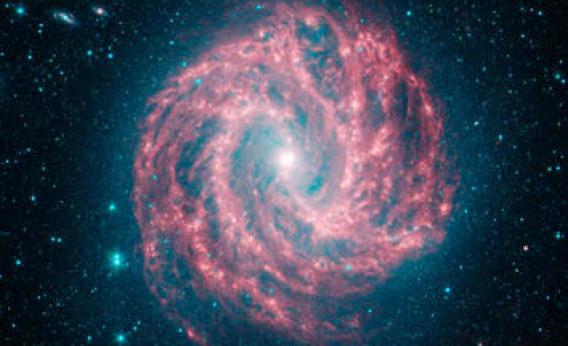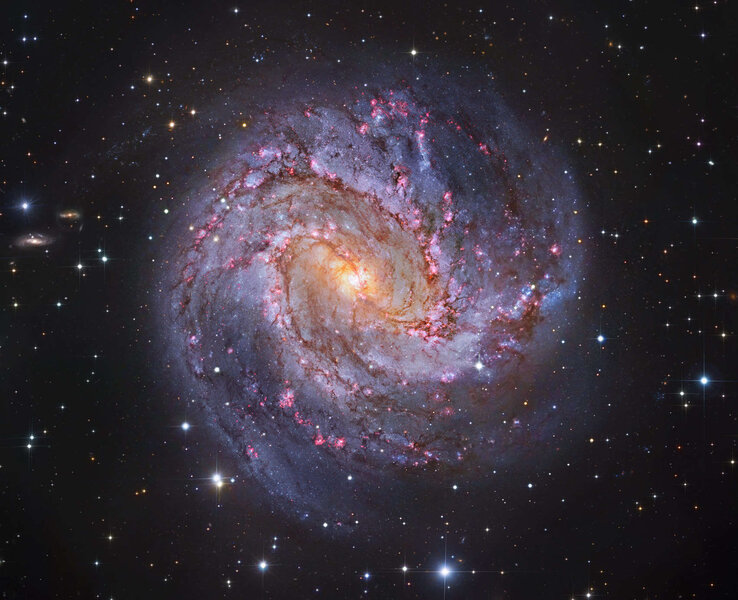Create a free profile to get unlimited access to exclusive videos, sweepstakes, and more!
M83, Writ Very, Very Large

M83 is a lovely spiral galaxy located about 15 million light-years from Earth. It’s the 83rd entry in Charles Messier’s catalog of bright objects in the sky (originally created by the comet-hunting astronomer in the late 1700s to keep track of objects he might mistake for his quarry), and one of the few big spirals I’ve never seen for myself through my telescope.
I’ll have to fix that sometime. Of course, my view will never, ever be quite as nice as this one:
Holy. Wow.
That image is a combination from two different observatories; part Hubble, part Subaru (an 8-meter monster telescope in Hawaii). It was created by master astrophotographer Robert Gendler. The inner parts are from Hubble, and parts of the surrounding area (added to fill in blank spots) are from Subaru.
If you have a good eye you can tell; the resolution in the spiral arms is quite high, and you can see individual stars, but if you look at the two more distant background galaxies on the left, the details look a bit fuzzier. Subaru has good resolution, but it’s hard to beat Hubble.
I highly recommend checking out Gendler’s 3,500 x 2,800 pixel version of this, as well the vast 6,000 x 6,660 Hubble-only image; the detail in the spiral arms is jaw-dropping.
M83 is pretty close as galaxies go and has been extensively studied. One of my favorite shots of it is from the Spitzer infrared observatory (at the top of this post); that traces the dust in the galaxy that glows in the far-IR. Where you see glowing red filaments is where stars are being born, and massive stars are dying. Both processes create and illuminate the long carbon-based molecules—dust—strewn in the spiral arms of galaxies like M83.
I’ve written a lot about this galaxy, including the fact that it looks a bit off-center, and that it recently ate another, smaller galaxy. I’ve written about the dust in it, too.
I sometimes despair that there’s just too much stuff in the Universe to see. I mean, duh, obviously, that’s true. It’s the Universe. But even nearby there are just so many amazing objects, so much to know—thousands of galaxies surround us in our cosmic neighborhood, and each contains billions of stars, huge numbers of star-forming nebulae, clusters, black holes, exotic compact objects like neutron stars and magnetars … we can’t even map everything in our own galaxy, let alone those nearby.
But then I remember how incredible that very fact is. There is wonder and joy and amazement in every direction we look, for as far as our minds and technology allow us to see. Sure, it’s overwhelming. It’s the Universe.
I’m OK with that. Really, even more: I wouldn’t have it any other way.



























